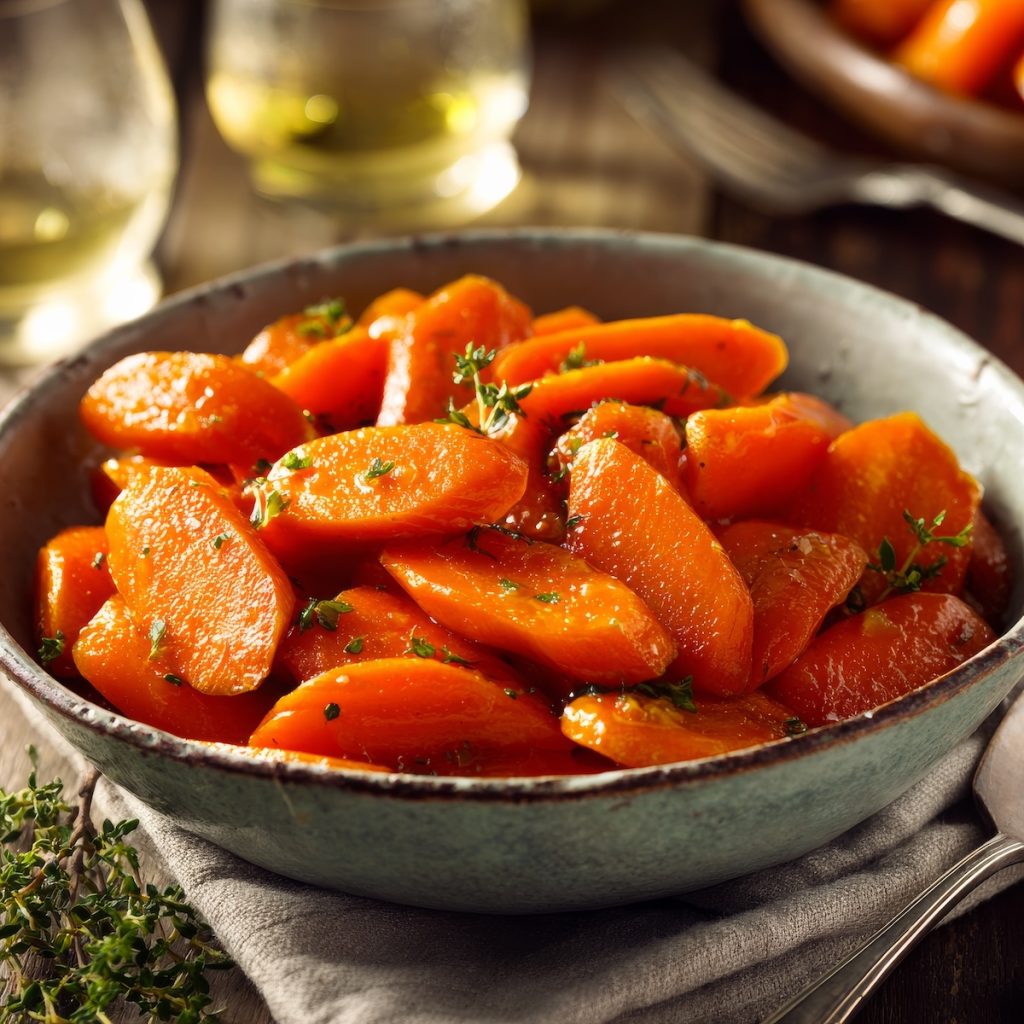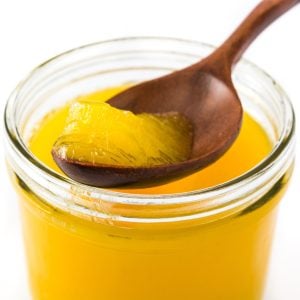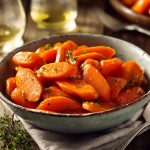How to Make Glazed Carrots – Classic French Technique, Simple Ingredients
Glazed carrots bring out the natural sweetness of this humble root vegetable, transforming it into a dish that feels both comforting and elegant.
With just a handful of ingredients—carrots, butter, sugar or honey, and a touch of seasoning—you can create a glossy, flavorful side that pairs beautifully with everything from roasted meats to weeknight chicken. The key lies in gently cooking the carrots until they’re tender, then finishing them in a sweet glaze that clings to each piece like a shiny coat.
This recipe focuses on simplicity and balance. You want the carrots to remain slightly firm, not mushy, with just enough glaze to enhance rather than overpower their natural flavor.
Whether you choose brown sugar for depth, honey for floral notes, or maple syrup for a richer taste, you can tailor the glaze to fit the rest of your meal. Glazed carrots work well for holidays, dinner parties, or any meal where you want a touch of sweetness and color on the plate.
In this post, I’ll walk you through the step-by-step process of preparing them, share a few variations to try, and offer tips to ensure your glaze turns out perfectly every time. Let’s bring some shine to your table.
Glazed Carrots Recipe
Ingredients
- 1 pound carrots peeled and sliced on a bias or use baby carrots
- 2 tablespoons butter unsalted
- 2 tablespoons honey or maple syrup or brown sugar
- ¼ cup water or low-sodium vegetable broth
- ½ teaspoon kosher salt
- freshly ground pepper to taste
- 1 teaspoon fresh thyme leaves or chopped parsley for garnish
Instructions
Prepare the carrots
- If using large carrots, peel and slice them into uniform pieces about ¼-inch thick on a diagonal.
Simmer
- In a medium skillet over medium heat, combine the carrots, butter, honey, water, salt, and a few grinds of pepper. Stir to coat the carrots.
Cover and cook
- Cover the skillet and cook for about 10 minutes, stirring occasionally, until the carrots are just tender but still firm.
Uncover and glaze
- Remove the lid and continue cooking for an additional 5–8 minutes, stirring frequently, until the liquid has reduced to a glossy glaze.
Finish
- Taste and adjust seasoning. Sprinkle with fresh herbs, if using, and serve warm.
Notes
Entrees Glazed Carrots Pairs Well With
Entrée | Why It Pairs Well with Glazed Carrots | Wine Pairing |
| Roast Chicken | The savory, crispy-skinned chicken contrasts beautifully with the sweet, buttery carrots. | Chardonnay or Pinot Noir |
| Glazed Ham | Complementary sweetness; both share glaze elements that harmonize without overpowering each other. | Riesling or Beaujolais |
| Beef Tenderloin | The richness of beef benefits from the light sweetness and soft texture of glazed carrots. | Cabernet Sauvignon or Merlot |
| Pork Loin with Herbs | Pork’s mild flavor welcomes the sweet counterpoint of carrots and adds color to the plate. | Pinot Noir or Chenin Blanc |
| Duck Breast (Pan-Seared or Roasted) | Duck’s gamey depth is lifted by the sweetness of the carrots, offering balance. | Zinfandel or Syrah |
| Salmon (Baked or Grilled) | Carrots add a sweet, earthy contrast to the fatty richness of salmon. | Pinot Gris or Unoaked Chardonnay |
| Stuffed Acorn Squash | A vegetarian option where the sweet carrots echo the squash’s natural sugars and create harmony. | Gewürztraminer or Viognier |
| Braised Lamb Shanks | The deep, savory flavor of lamb is rounded out by the bright sweetness of glazed carrots. | Malbec or Côtes du Rhône |
| Mushroom Risotto | Earthy mushrooms and creamy rice pair beautifully with sweet, tender carrots as a textural contrast. | Sauvignon Blanc or Pinot Noir |
| Chicken Marsala | The savory mushroom sauce and glazed carrots together add both sweetness and umami. | Marsala or Dolcetto |
History of Glazed Carrots
The history of glazed carrots traces back to European cooking traditions, particularly in French cuisine, where the technique of glazing vegetables—called légumes glacés—emerged in the 18th and 19th centuries.
The method involves simmering vegetables with butter, sugar, and water until they become tender and coated with a glossy, flavorful glaze. Carrots were a natural candidate for this preparation due to their inherent sweetness and vibrant color.
In French culinary schools, carrots are among the classic vegetables used to teach proper glazing technique. The goal is to achieve a “mirror-like” finish without overcooking the vegetable—an ideal balance of visual appeal and texture.
As French cuisine influenced global cooking, especially in the 20th century, glazed carrots appeared in American and British cookbooks, often as a holiday or formal dinner side dish. They became popular in the mid-20th century in the United States, featured in cookbooks as an easy way to dress up carrots for festive meals, including Thanksgiving and Christmas.
While the traditional glaze was simple—sugar, butter, and sometimes a splash of broth—variations developed over time, incorporating honey, maple syrup, orange juice, cinnamon, and herbs, making glazed carrots a versatile and enduring part of both home and restaurant cuisine.





